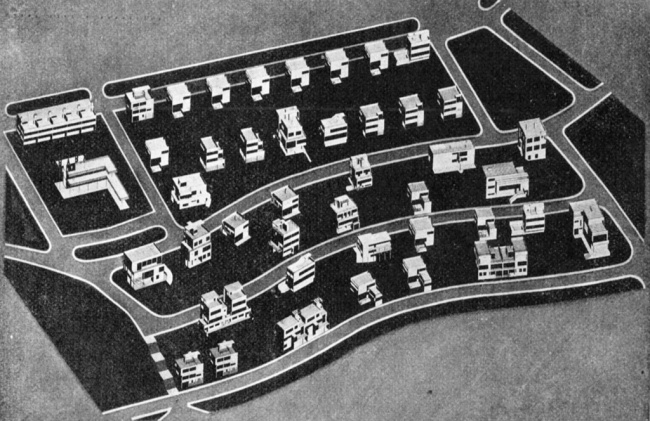
The Baba Colony has received the European Heritage Label
 |
Brussels – Ten new locations have been added to the list of significant monuments awarded the European Heritage Label, among which are three from the Czech Republic. The jury selected the West Bohemian castle of Kynžvart and a group of interwar experimental housing estates of modern architecture, including the Prague colony Baba and the Brno colony Nový dům. This was reported today by the European Commission.
The European Heritage Label has been in operation since 2013 and was created to recognize monuments that played a pivotal role in the history of Europe or in European integration. The symbolic value of the site is a significantly more important criterion in deciding on the awarding of the label than its aesthetic or architectural quality.
The list now includes 48 locations, including the new additions. Among them are, for example, the village of Schengen, the site of the signing of the Schengen Agreement on free movement, the center of Athens, or the shipyard in Gdańsk. Until now, the Czech Republic was represented by the Přemyslid Castle in Olomouc.
Kynžvart Castle made the list as a venue for diplomatic meetings during the time when it was owned by Austrian Chancellor Klemens Metternich. The Prague and Brno colonies of modern houses received the award as part of a joint application from the Czech Republic, Poland, Austria, and Germany, where colonies of functionalist buildings were created between the world wars, inspired by the Werkbund association. In addition to Prague and Brno, these colonies can also be visited in Stuttgart, Wrocław, Vienna, and Zurich.
The Baba Settlement in Prague
- The villa colony in Prague's Dejvice emerged as one of the European demonstration colonies of modern housing. It followed other similar projects, among the most significant of which is the Stuttgart colony Weissenhofsiedlung, built according to the urban design of Ludwig Mies van der Rohe during the Die Wohnung exhibition in 1927.
- The Baba colony includes 33 functionalist villas built between 1932 and 1940. The houses vary in type, with one or two apartments, or villas with studios, mostly in the style of emotional functionalism.
- The project was initiated by the Czechoslovak Union of Art under the leadership of architect Pavel Janák. Many well-known personalities, architects, politicians, lawyers, and artists had villas built here. For example, there is Sutnar's villa designed by architect Oldřich Starý, Suk's villa according to the plans of Hana Kučerová Záveská, and Janák's villa. The only building whose design involved a foreign architect is Palička's villa, the plans for which were developed by Dutch architect Mart Stam.
- The Baba settlement has been a municipal heritage zone since 1993.
The Nový dům Colony in Brno
- The exhibition colony Nový dům in Brno-Žabovřesky ranks among European demonstration projects of modern housing that originated before the Second World War.
- The construction was initiated by builders Čeněk Ruller and František Uherka, supported by the Czechoslovak Union of Art. The aim was to present modern, economical individual housing for the middle class.
- The colony consists of 16 functionalist houses built in 1928. Their layout on the plot beneath Wilson's Forest was established by architects Bohuslav Fuchs and Jaroslav Grunt based on floor plans provided by nine architects. The houses are placed freely around the perimeter of the wedge-shaped plot, with a shared park area in the center. Most apartments were equipped with standard built-in furniture.
- Currently, some houses are protected as historical monuments (Fuchs's, Grunt's, and Starý's). Many of the houses, however, suffered during the previous regime, as they were used for multi-generational living and therefore underwent various modifications and renovations.
The English translation is powered by AI tool. Switch to Czech to view the original text source.
0 comments
add comment
Related articles
0
02.09.2022 | The First Republic functionalist colony Baba in Prague will be renovated
0
14.04.2020 | Prague will develop a concept for the modifications of the settlement Baba
0
24.09.2012 | Praha 6 will commemorate the 80th anniversary of the architecture exhibition at Baba with an exhibition
0
24.10.2006 | Interwar Exhibitions of Contemporary Housing












